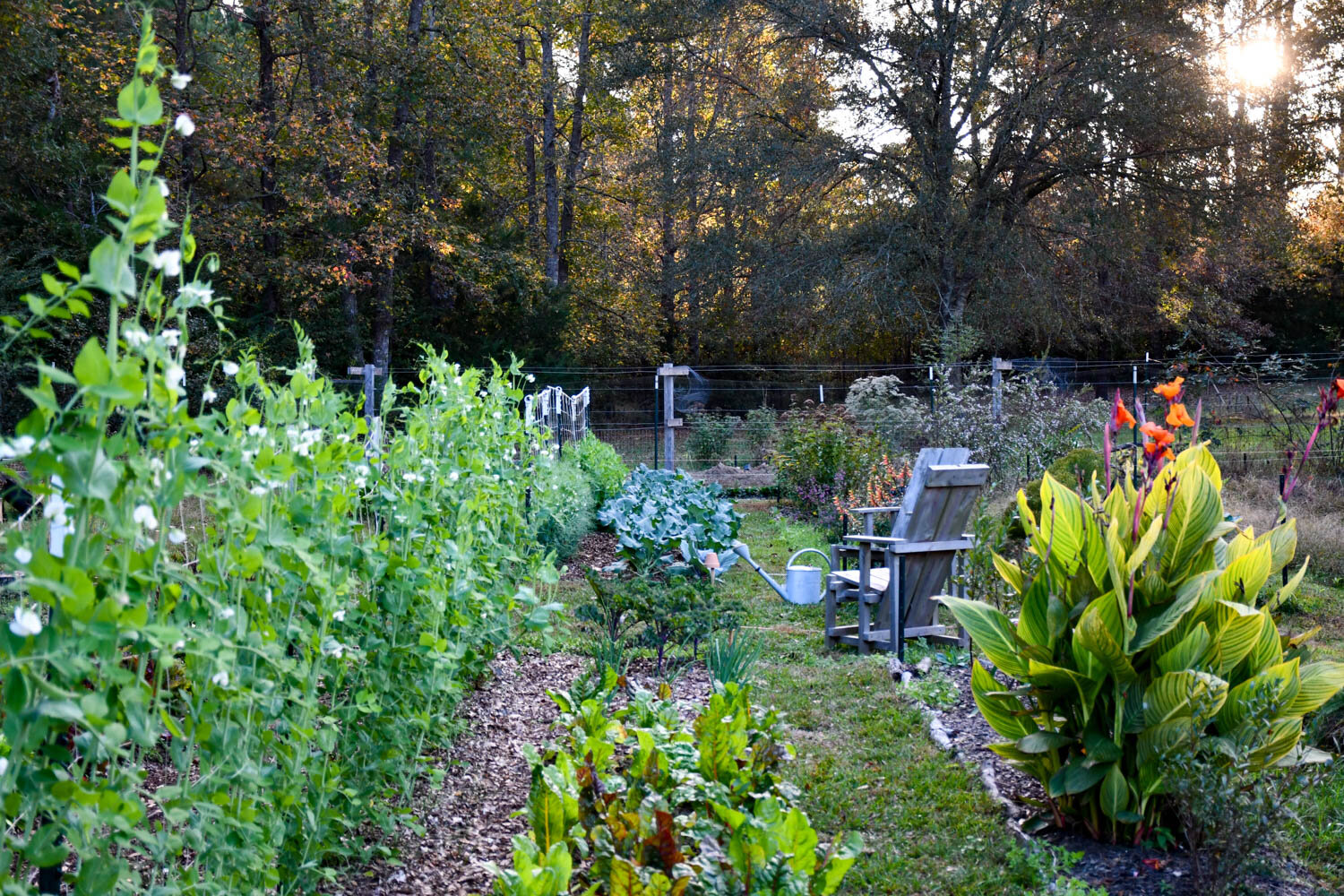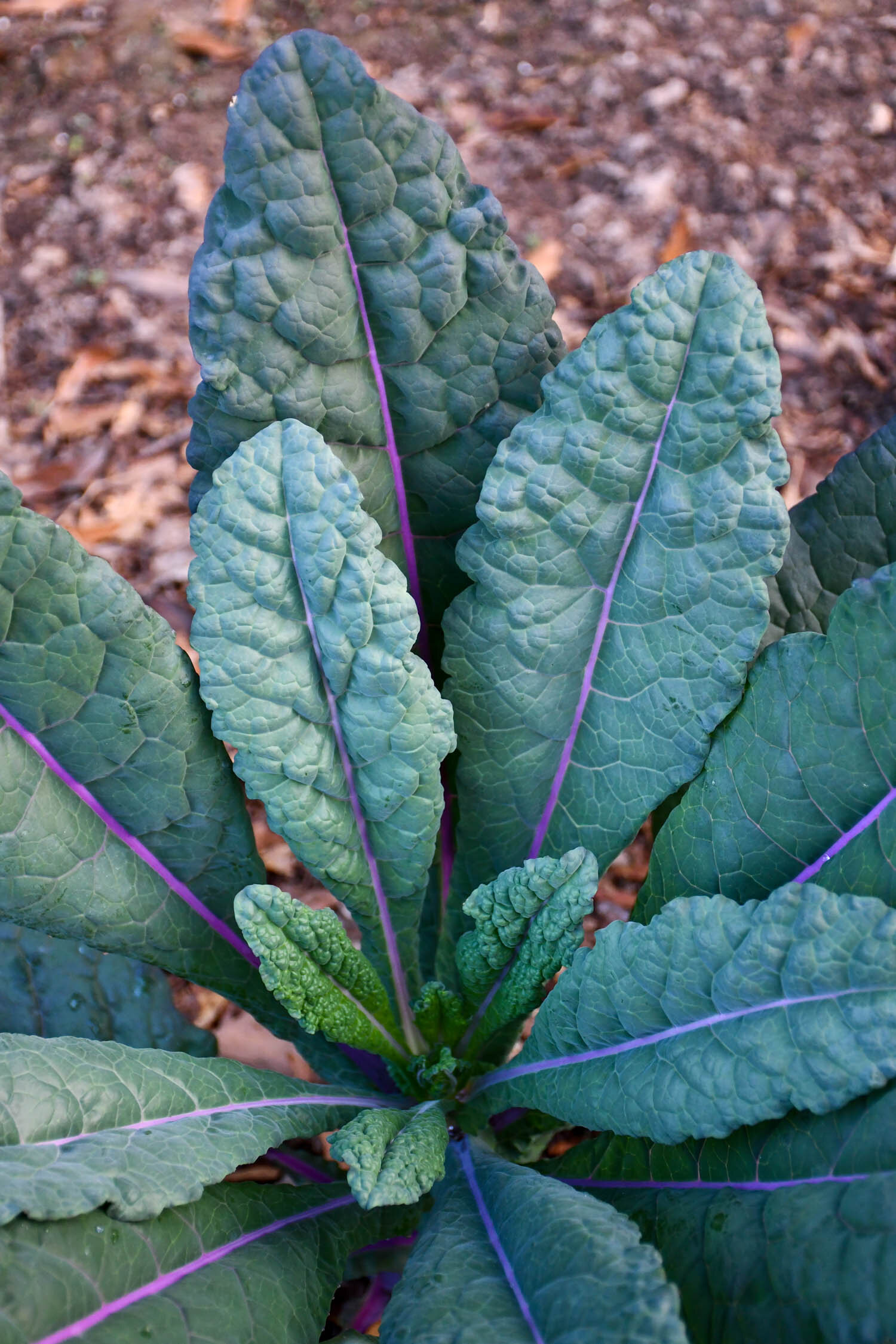I spied a solitary bloom on our peach tree in the orchard, and I knew it was time to prune. Removing branches from fruit trees in the south is typically a fall or winter task. However, after losing a couple of small peach trees last year from the extreme cold, I erred on the side of caution and waited until the last possible moment to correct the tree’s architecture. That moment had arrived.
I scurried inside to review the art of pruning as if the minuscule time I saved meant less sap flowing toward the soon-to-be-removed buds. Pruning is a commitment, like promising to cook a once-a-year meal for the family. It is good to refresh the mind on technique. The last thing one wants is regret for years to come from a simple mistake, whether it be a bad cut or a burnt dish.
I pulled The Holistic Orchard by Michael Phelps off the shelf and flipped through the pages. Many things I knew. Prune for an open center, check. Prune out branches that grow back inside the tree, check. Prune above the bud that you want to grow outward, check.
It was good to read again how light needs to penetrate into the tree and to imagine how the radiant energy would hit branches. “Be the bud,” I am told not once but twice. I chuckled at advice he received from a Vermont farmer in the book, “You done [sic] a good job at pruning if afterward you can take the family cow and fling her between the branches.”
I don’t have a cow, and I wanted a second perspective. Therefore, I pulled up Dr. Mike Parker’s extension videos on pruning peaches. I never had Mike for a class, but I considered him a friendly colleague while going through grad school at NC State. Since my tree was a couple years old, I opted to watch the video on pruning two-year old specimens. His discussion on heading cuts and scaffolding was helpful to think about maintaining good architecture.
Back outside, I grabbed my loppers. My pruners were already in the holster I wear on my belt. I would need both for the different sized branches.
I pruned the easy twigs first—the thin whips that grew into the center and on the bottom of the branches. I next set about heading back branches to remove apical dominance and encourage them to strengthen and become more bushy in habit. Then came the hard part—to reduce the upright growths down to nubs. I should have pruned them last year, but I’m just so used to encouraging vertical growth in trees that it feels weird to make such cuts. The branches rose a good 10-12 feet up in the sky, and in a moment of, “Here we go,” one swift chop reduced the growth by half to stubs. I felt like an accomplice to crape murder.
Hatrack, anyone?
I always feel bad after a harsh pruning. But, I know it’s better for the fruit tree—to encourage outward growth, an open center, and denser branches that can actually bear the load of the fruit. And, having a well-pruned peach tree is better for me and my summertime cravings for cobbler.
Another benefit to pruning is the beauty I could bring inside afterwards. Since I waited so late, the the buds were all primed to burst open. I went through the clippings and chose the best I could to force indoors. They have slowly opened over the past week becoming a beautiful sweet pink. Now, I can’t wait for our trees to start bearing.
The thinnings of ‘Tropic Beauty’ gain a second life with forcing. These peach blossoms are such a welcome sight after the buds pop open.

































